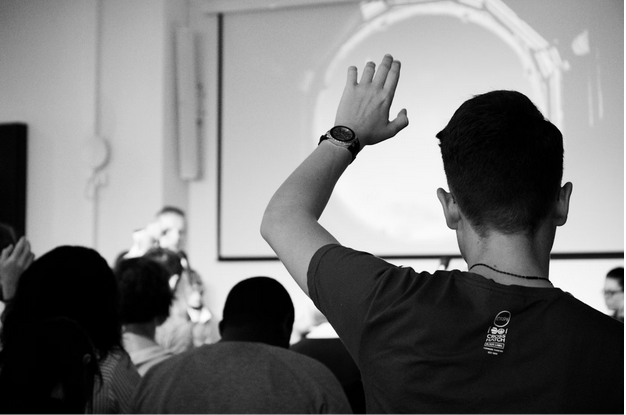In a world brimming with digital avenues of communication, there remains a universal and primal method of conveying messages that doesn't require a single word: body language. Our gestures, postures, and subtle motions can speak volumes, often more loudly and persuasively than our spoken language. Mastering nonverbal communication can pave the way for better relationships, personal charisma, and professional success. In this comprehensive guide, we'll unpack the nuances of body language, explore its contextual significance, and provide you with the tools to harness its unspoken power.

Understanding the Role of Nonverbal Communication
Nonverbal communication, often termed the language of the body, is a complex interplay of facial expressions, eye contact, gestures, postures, and more. It's an integral part of daily interaction, influencing how we're perceived and how we perceive others. Studies indicate that nonverbal cues can account for over 50% of communication, underlining its significance in interpersonal dynamics. This silent component of conversation can convey emotions, assert dominance, show compassion, or even reveal deception.
The Science Behind Nonverbal Signals
Nonverbal communication eludes from a region of the brain known as the limbic system, which deals with emotions and memory. Unlike verbal communication, which largely stems from the neocortex, the most developed part of the human brain, nonverbal signals are more primal and instantaneous, often bypassing conscious thought. Neurobiologically, these gestures and motions play a crucial role in forming first impressions, establishing trust, and fostering empathy.
The Universality of Nonverbal Expression
Across cultures, many nonverbal signals carry similar meanings, owing to their biological and environmental commonalities. A smile, for instance, typically signifies happiness, irrespective of language or customs. This universality is rooted in our shared human experience and evolutionary history. Understanding these innate patterns can help us communicate effectively, especially in global or multicultural environments.
Nonverbal Communication in Everyday Interactions
From job interviews to romantic rendezvous, nonverbal communication is at play in all aspects of life. Here's how you can leverage body language to make a lasting impression and better connect with others.
Navigating Social Encounters
In social encounters, paying attention to the nonverbal cues of your conversation partners is key to establishing rapport and trust. One effective strategy is "mirroring" — subtly mimicking the body language of the person you are interacting with. This practice, rooted in empathy and synchronization, can create a sense of harmony and understanding between individuals. Many times, mirroring meaning through gestures, posture, and facial expressions emphasizes mutual respect and interest, often leading to more meaningful and engaging conversations. Additionally, maintaining good eye contact and open body language (uncrossed arms, relaxed shoulders) can convey confidence and approachability.
The Role of Nonverbal Cues in Professional Settings
In the workplace, nonverbal communication can be a decisive factor in leadership, team dynamics, and customer relations. Dress, grooming, and personal space are all part of the nonverbal toolkit that professionals can wield to project competence and influence. With a heightened awareness of their own body language, employees can better assert themselves in meetings and negotiations to achieve optimal results.
Body Language and Personal Branding
Our nonverbal behavior is an integral part of our personal brand - the image we consciously or unconsciously project to the world. By aligning body language with our goals and values, we can craft a powerful personal brand that resonates with others.
The Impact of Nonverbal Cues on Perceived Authority
First impressions are critical in establishing credibility and authority. Individuals in positions of power often exhibit certain nonverbal cues, such as strong eye contact, a steady voice, and a confident gait. These signals help to command attention and respect, shaping the way others respond and cater to their needs.
Building Charisma Through Body Language
Charisma is an ineffable quality that draws others in and inspires devotion. Much of it is communicated through the way we carry ourselves. Engaging in open, confident, and dynamic movements can cultivate a charismatic persona that magnetizes people. The subtle blend of passion and poise sends ripples of influence far beyond the reach of words.
Nonverbal Cues in the Digital Age
In an age of virtual meetings and online networking, the dynamics of body language have shifted. Even through a screen, our gestures carry meaning. From the angle of your camera to your facial expressions, each element contributes to your digital body language. Being mindful of these nuances can help bridge the gap in remote interactions, ensuring that your presence is felt and your message is clear.
Improving Your Nonverbal Fluency: Tips and Practical Exercises
Cultivating Mindfulness of Your Own Body Language
Begin by paying attention to your own nonverbal behavior. Notice how you react in different situations, such as stress, excitement, or boredom. This self-awareness is the foundation for improving how you project yourself to others.
Role-playing and Mirror Exercises
Engage in role-playing scenarios with a partner to practice your nonverbal repertoire. Take turns portraying various emotions and social dynamics, while the other person observes and provides feedback. Mirror exercises, where you consciously mimic someone's body language, can also help you develop a deeper connection with others.
Video Analysis and Feedback
Record yourself in solo conversations, presentations, or mock interviews. Review the footage with an eye for your nonverbal cues. Look for areas of improvement, such as fidgeting, crossed arms, or a lack of eye contact, and make adjustments.
Beyond Words: Harnessing the Power of Silence
The spaces between words are laden with nonverbal potential. Learn to use silence to convey thoughtfulness and control. Pause before speaking or in the middle of a conversation to emphasize a point or manage the flow of dialogue.
Consistency in Message Delivery
Ensure that your verbal, vocal, and visual (i.e., body language) messages align. Incongruence can lead to mixed signals and diminish your impact. Pay attention to the full spectrum of communication cues to ensure a cohesive and compelling message.

In the intricate dance of human interaction, nonverbal communication is the music that guides our steps. By honing this skill, we can better express our true selves, understand the unsaid, and foster richer connections with the world around us. Whether in the boardroom, the classroom, or the living room, the way we move, gesture, and hold ourselves speaks volumes. It's a silent language that, when mastered, can transform the quality of our lives and relationships.



